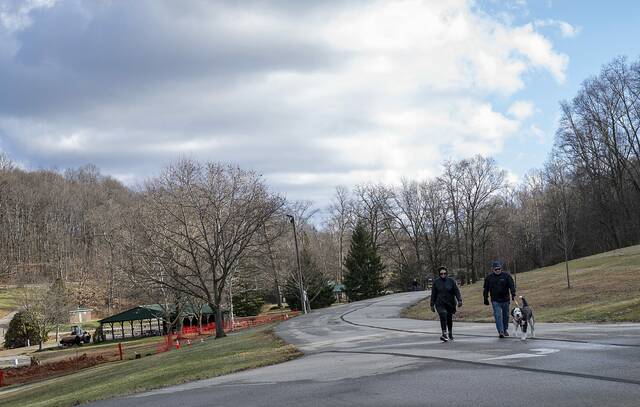Despite fears that influenza would combine with covid-19 to create a so-called “twindemic,” this flu season has been a mild one.
Allegheny County so far has reported zero flu-related deaths, three hospitalizations and 180 cases. That’s a notable drop from last year’s 12 deaths, 115 hospitalizations and over 10,000 cases.
“This isn’t even a mild flu season. This is like no season,” said Dr. Richard Zimmerman, one of the top flu experts in the country. A professor of family medicine and public health at the University of Pittsburgh and a practicing physician, Zimmerman directs PittVax, a long-running Centers for Disease Control and Prevention-funded study of flu activity and vaccine effectiveness.
“We should be really grateful not to have a twindemic,” Zimmerman said. “The last thing we needed was a bad flu year on top of all this covid.”
At Allegheny Valley Hospital in Harrison, there has been only one flu case so far this season, said Dr. William Bailey, chief medical officer at Allegheny Health Network and an active emergency department physician.
“This is probably as close to a nonexistent flu season as I’ve ever seen in my life,” Bailey said. “We’ve had very few cases. I think we’re probably down about 98% from last year’s cases.”
The same trends are true for Excela Health, said Kathleen Rosatti, director of clinical outcomes management, patient safety and infection control.
“This time last year, we had seen a total of 900 patients,” Rosatti said. “Right now, we barely have any. We’re down to single digits.”
Low flu numbers persist statewide, with 2,748 laboratory-confirmed cases throughout the commonwealth as of Feb. 20, said Amber Liggett, a Pennsylvania Department of Health spokeswoman. During the 2019-20 flu season, the DOH recorded over 130,000 cases statewide.
She said Pennsylvania has reported 34 influenza-related hospitalizations and 14 deaths during the current flu season.
“Percent of outpatient visits associated with influenza-like illness has been low and is still below the state epidemic threshold,” Liggett said.
Health officials said the mitigation measures in place to curb the spread of covid-19 are likely the key to this year’s mild flu season.
“The precautions being taken to prevent the spread of covid are the same precautions recommended to prevent the spread of the flu,” said Amie Downs, an Allegheny County spokeswoman. She attributed the county’s mild flu season to basic mitigation measures like covering coughs and sneezes, washing hands frequently and wearing masks.
Covid-19 and the flu are both respiratory viruses, and therefore can be managed with the same mitigation measures, Zimmerman explained.
“These viruses are all transmitted in similar mechanisms,” he said. “The mitigation measures do make a substantial impact because they transfer across all respiratory viruses.”
Rosatti agreed that covid-19 mitigation efforts are keeping flu cases down.
“Naturally, everything we’ve put in place for covid — the wearing of masks, the practicing of social distancing, hand hygiene — have all made a difference,” she said.
Knowing that mitigation measures were in place to combat covid-19, Bailey said he wasn’t surprised to see a mild flu season this year.
“What we’re getting is what you’d expect,” he said. “Staying away from contacts, wearing face masks, distancing, everything we’re doing for the coronavirus at this time is doing what you’d expect it do for every other respiratory virus as well.”
Zimmerman noted that less international travel this year — another symptom of the covid-19 pandemic — also helped limit the spread of influenza. Flu cases often come from South America and Australia, he said. Less global travel means fewer opportunities to spread the flu worldwide.
“We have not seen much flu internationally,” he added.
Though there was much emphasis on the importance of getting a flu shot this year, flu vaccines likely played only a small role in this exceptionally mild flu season, Zimmerman said.
“It may have contributed some, but I think the mitigation measures played a lot,” he said. “I’m sure no more than half of adults were vaccinated.”
About 53% of adults received a flu vaccine this season, according to data from the CDC.
Though flu season has been particularly mild thus far, it’s impossible to predict what the final months of the season may bring.
“Flu is unpredictable, and its activity depends on many factors, including consistency in using covid-19 mitigation actions,” Liggett said.
As long as people continue adhering to mitigation measures, Bailey said, the remainder of flu season will likely remain mild.
“I think with influenza and coronavirus, our risk is complacency,” he said. “Things seem to be improving at the moment, but we have to keep our guard up.”











